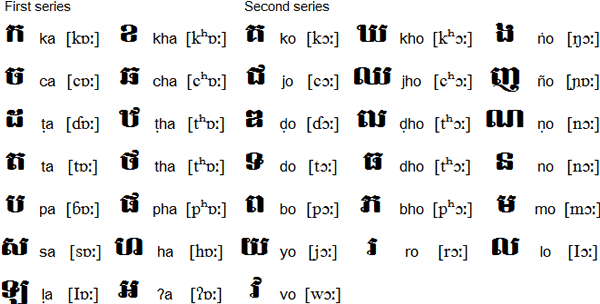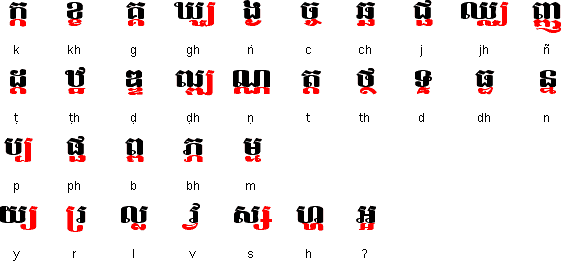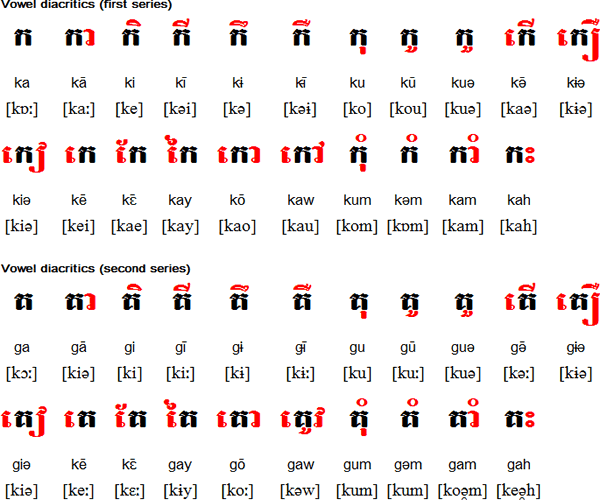Khmer alphabet 
The Khmer alphabet is descended from the Brahmi
script of ancient India by way of the Pallava script, which was used
in southern India and South East Asia during the 5th and 6th Centuries
AD. The oldest dated inscription in Khmer, found at Angkor Borei in
Takev Province south of Phnom Penh, dates from 611 AD.
The Khmer alphabet closely resembles the Thai
and Lao alphabets, which were
developed from it.
Notable features
- This is syllabic alphabet in which each consonant has two forms,
one with an inherent /a/ (first series) and one with an inherent /o/
(second series) - Vowels are indicated using either separate letters or diacritics,
which written above, below, in front of, after or around consonants.
The pronunciation of the vowels depends on whether a consonant they
are attached to is of the first or second series. - All consonants have a subscript form which is used to write the
second consonant of a cluster. - In a Khmer text there are no spaces between words, instead spaces
indicate the end of a clause or sentence. - Inspite of efforts to standardise written Khmer, many words have
more than one accepted spelling.
Used to write:
Khmer (Cambodian), a member of the Mon-Khmer group of
Austro-Asiatic languages, spoken by about 8 million people in Cambodia,
Vietnam, Laos, Thailand, China, France and the USA. Khmer shares many
features and much vocabulary with Thai as a result of centuries of two-way
borrowing. There are also borrowings from Sanskrit, Pali, French and Chinese
in Khmer.
Khmer alphabet
Consonants

Subscript consonants

Inpedendent vowels


Numerals

Sample text

Translation
All human beings are born free and equal in dignity and rights. They
are endowed with reason and conscience and should act towards one another
in a spirit of brotherhood.
(Article 1 of the Universal Declaration of Human Rights)
